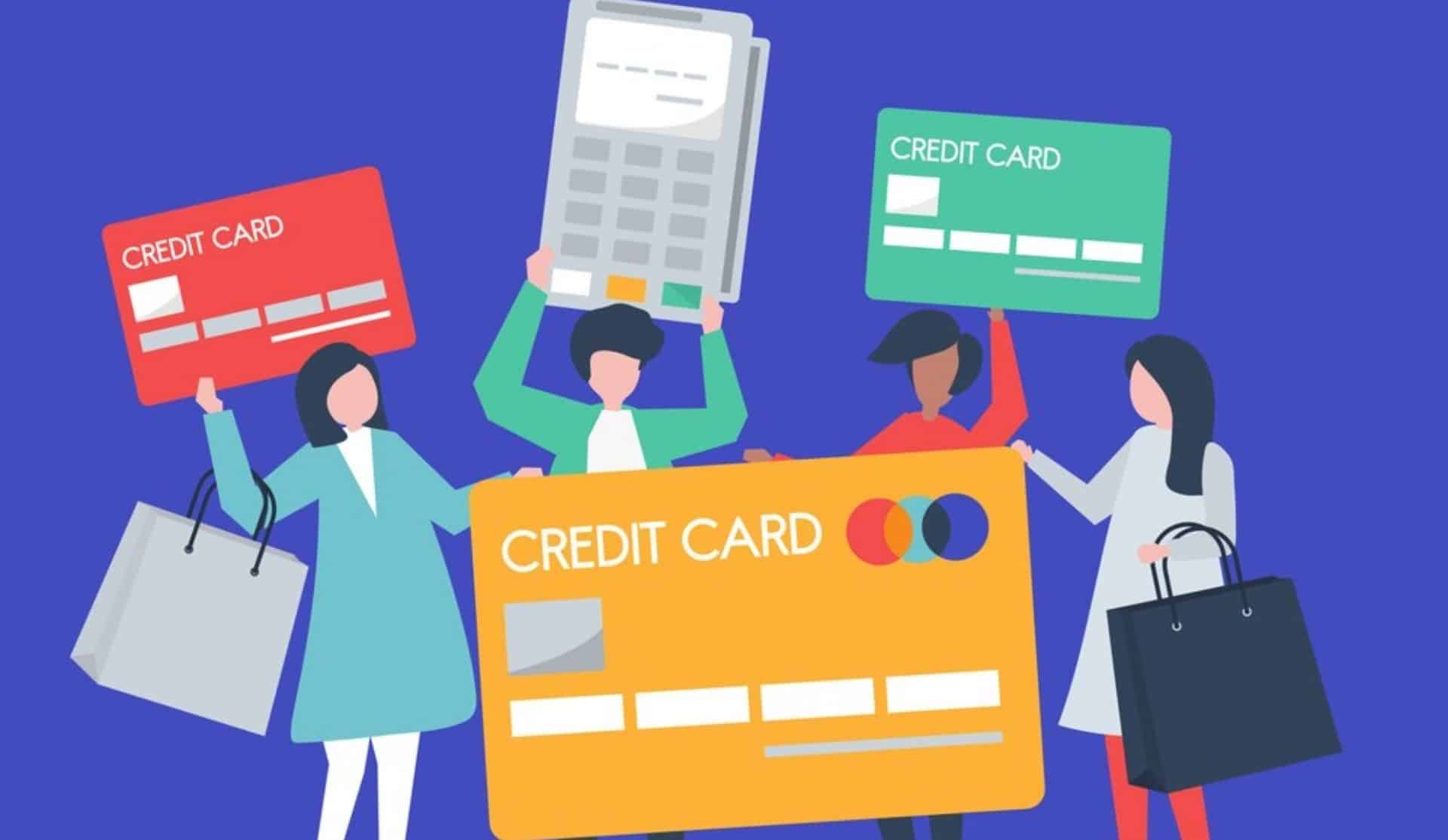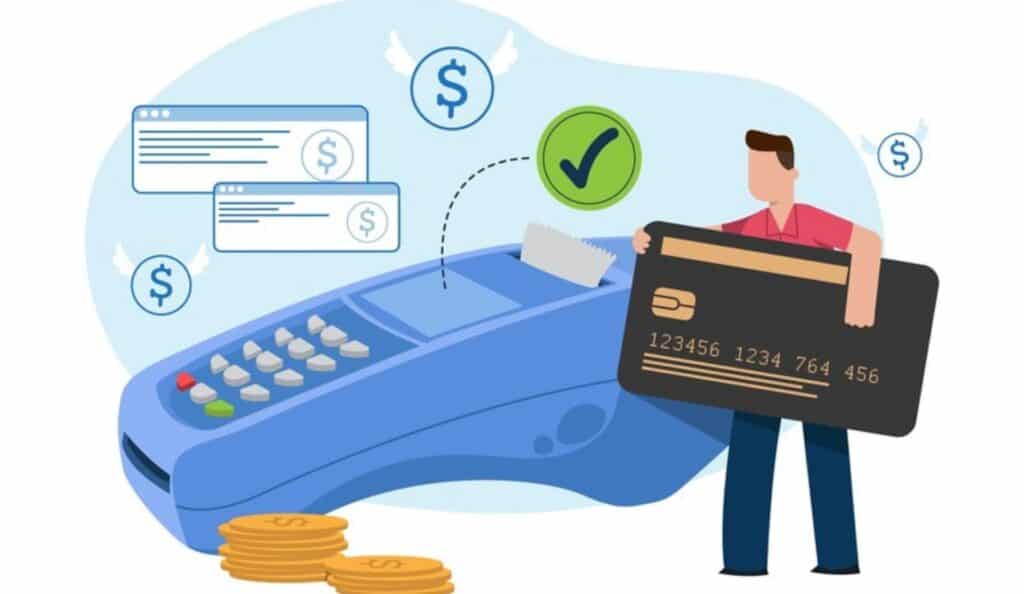
By Imogen Stephens April 11, 2025
Credit card processing costs can be an enormous expense for companies. The fees involve various charges that add up over time. To lower these expenses, companies can attempt to negotiate improved rates from payment processors, choose the appropriate pricing plans, simplify transaction processes, implement security methods to avoid fraud, and advertise other payment alternatives.
Monitoring transaction statements on a regular basis can assist companies in discovering concealed fees and making more intelligent decisions to reduce expenses. Staying current with industry trends and employing resources such as AI to manage payments can assist companies with comprehending and controlling these fees more effectively. By following these actions, companies can control expenses while still allowing customers a seamless payment process.
What is a Credit Card Processing Fee?

Regardless of whether you have an online business or a brick-and-mortar store, you will be required to pay credit card processing fees to accept payments by card. These fees, usually between 1.5% and 3.5% of the transaction value, are paid for the services rendered by card issuers and payment processors. Even though these charges are small, they can be cumulative and eat into your bottom line.
What Is Payment Processing Fee?
Payment processing is something businesses need to do, and they need to accept payments from customers. It involves receiving payment details, verification of whether there is sufficient money, and transferring money from the customer’s bank or credit card to the business’s account. It requires the seller, the customer, the payment system, and banks to ensure all is handled securely. A payment processing service assists in processing cards, establishing secure connections, and communicating with banks. An understanding of payment processing assists businesses in ensuring transactions are secure and function effectively. Credit card and debit card payments are prevalent in the US.
The Average Credit Card Processing Fee
Credit card processing charges typically cost between 1.5% and 3.5% of the order amount. They vary based on such factors as the card firm, transaction type, and business category. The majority of these charges are interchange fees, which are determined by card firms such as Visa and MasterCard and go to banks. For instance, Visa interchange fees range from 1.15% + $0.05 to 2.40% + $0.10 per transaction. Assessment fees, roughly 0.14%, are also paid to card companies for services. Payment processor fees vary depending on the agreement between the business and the processor.
Payments made online or by hand tend to be more expensive, ranging from 2.25% to 2.50%, than payments made in person. Cards with more rewards have a higher interchange fee. In 2025, companies have incurred more costs, particularly from reward cards and riskier industries. American Express cards charge more, between 1.43% + $0.10 and 3.30% + $0.10 per transaction. North America has some of the highest world average fees. Companies can utilize such tools as statements to monitor these costs and negotiate favorable terms with processors to reduce their expenses.
Types of Credit Card Processing Fee
Interchange fees
These fees are charged by the customer’s bank from the business’s bank for processing the transaction, determined by card networks such as Visa and Mastercard.
Assessment fees
These Fees are charged by the card network to the business’s bank, typically lower than interchange fees.
Payment gateway fees
This provides charges to the payment gateway provider for securely processing online transactions.
Chargeback fees
These are levied on the company for administrative fees when a customer contests a transaction and a refund is issued.
Factors That Affect Credit Card Processing Fee
- Type of card used: Premium cards and reward cards tend to have higher interchange fees.
- Business type and industry: Travel and entertainment are examples of high-risk industries that may pay more.
- Transaction size and volume: Large transaction volume businesses are often able to negotiate reduced fees.
- Transaction method: Swipe transactions completed in person will generally be less expensive than those keyed in online or entered manually because they involve lower fraud risk.
- Processing history: Chargeback rate and compounding against industry standards might attract some fees.
- Geographic location: Fees usually range by country or region.
- Negotiation and pricing models: Some fees are negotiable so that the overall cost could depend on a flat-rate or interchange-plus pricing model.
Smart Tips to Reduce Processing Costs
There are some tips where you can reduce and lower your credit card processing cost–

Using A Level Three Payment Gateway
Credit cards are subject to Federal Reserve exchange rates that fluctuate twice a year and differ by type of card and issuing institution. B2B businesses that process level 3 data save a great deal in fees. To be eligible for level 3, companies are required to include detailed transaction data like merchant name, dollar amount, date, tax, zip code, invoice, order number, freight charge, and line-item data.
There also needs to be a payment gateway to complete these transactions. Level 3 processing saves on fees and provides significant discounts for invoices over $7,500, allowing companies to save between 25% to 75% on transaction costs, which is best for processing large orders from customers.
For example- A more than 3.5% fee transaction may be cleared at below 2% if processed correctly. A 1% reduction in your rate reduces fees by 33%. For businesses processing consumer cards, this doesn’t matter too much, but it can be a game changer for those accepting business or corporate cards.
A level three payment gateway is going to ask for detailed transaction data for 30 fields in order to achieve the lowest rates. Data-enhanced gateways are available for merchants, which automatically fill in necessary details. This allows for savings in time and automatic if less fees without tedious work.
Through an Audit
There are numerous companies, that facilitate businesses in saving credit card processing fees by checking their current fees. However, be on the lookout, as some companies will attempt to tie you down with contracts, making it difficult to change if you are dissatisfied with their service. Better to select companies that offer transparent services with no contracts.
You can search for such companies online, but be sure to take your time and research and choose the right one and by doing these things, you can better control your credit card processing fees and save money without having to switch payment processors.
Through Negotiating
As your business expands, your processing needs may shift, allowing you to renegotiate rates. Increased transaction volumes, better security, or reduced chargebacks can enhance your business’s reputation and reduce costs. Schedule annual reviews with your provider to review your account and ask for improved rates based on your history.
Alternative Payment Methods
Providing alternative methods for paying, particularly online, can lower credit card charges. ACH payments do not incur additional fees, and debit cards are more secure since they require cash. Debit cards typically cost a fee of $0.21 + $0.05. Other alternatives to save money involve using services such as Google Pay, Apple Pay, or PayPal. It is essential to obtain the best rate for both contactless as well as online payments.
Through Electronic Payment
Electronic payment rails facilitate fast and secure transfers of funds with automatic settlement. AR automation also assists businesses in enhancing invoicing, cash flow, and accuracy. These systems authenticate funds and monitor payments in real-time, minimizing chargebacks, fees, and manual intervention, and may be integrated into ERP systems for increased efficiency.
Full Customer Details
Collecting full customer details, such as their address, phone number, and CVV code in online and phone transactions assists in verifying their identity and reduces fraud and chargebacks. Utilizing features such as customer accounts and stored payment methods can also assist in avoiding fraud. The more you know about customers, the fewer transaction fees and risks. Chargebacks can cost $25 or more per time, which raises the likelihood of not being paid.
Accepting and Encouraging ACH Fee
ACH payments are bank-to-bank transfers that are quicker and more secure than checks, with no interchange fees. Low rates, between 0% and 1.99%, or a flat rate, are charged by most providers. ACH is ideal for small businesses with memberships or subscriptions. It is a reliable system for domestic transactions, utilized by numerous banks, for debit and credit payments. Although there might be minor charges, ACH fees are relatively low compared to credit card fees, and they prevent chargebacks and fraud.
Through the Bank Payment System
Paystand Bank Network assists companies in moving money electronically without charging a transaction fee. It has coverage for more than 90% of American banks and 98% of business accounts, thus being a highly dependable electronic payment network.
This network facilitates real-time transfers, automated settlements, and secure one-time or periodic payments, accelerating transactions and lowering chargebacks. All payments transacted within the network are retained on the Assurety blockchain, generating secure and immutable records that guarantee transactions are valid and tamper-proof.
Increasing the credit card processing volume
If your company is on the verge of meeting the criteria to receive more favorable processing rates, urge clients to pay using a credit card in order to increase your volume. Increased volume allows you greater bargaining power and can be a marketing competitive advantage.
Inform customers that your business supports mobile payments such as Google Pay, Samsung Pay, and Apple Pay. Embed PayPal or Venmo logos in emails, send reminders on social media, post notices inside your shop, and place banners on your website. Demonstrate to customers that you are keen to make payments convenient and accommodate their preferred options.
Security Improvement
Enhancing the security and transparency of your payment system can reduce additional fees or charges. For instance, the Paystand Bank Network employs cryptography and digital signatures to facilitate secure one-time or recurring bank payments without blanket authorizations. The customer initiates each payment, with their approval and intent to pay clearly displayed, significantly reducing refunds and chargebacks associated with credit card payments.
Decreasing in Chargeback and Preventing Fraud
Chargebacks and fraud are expensive, but you can minimize them by adhering to PCI DSS guidelines, educating employees on how to process payments properly, making deliveries that require signatures, maintaining records of transactions, and having a refund policy.
Conclusion
Credit card processing fees can greatly affect a company’s profits, especially in competitive markets. By learning about these fees like interchange, assessment, and gateway charges, businesses can find ways to lower their costs. Some helpful strategies include using a level three payment gateway, promoting ACH payments, improving security for transactions, reducing chargebacks, and negotiating with payment processors.
These steps can save money over time. Also, using technology like AI to monitor and automate payments, plus doing regular checks, helps businesses stay in control. By being informed and careful, companies can improve their payment systems, cut unnecessary costs, and provide customers with a safe and easy payment experience.